Floods across the country highlight need for a robust flood management structure
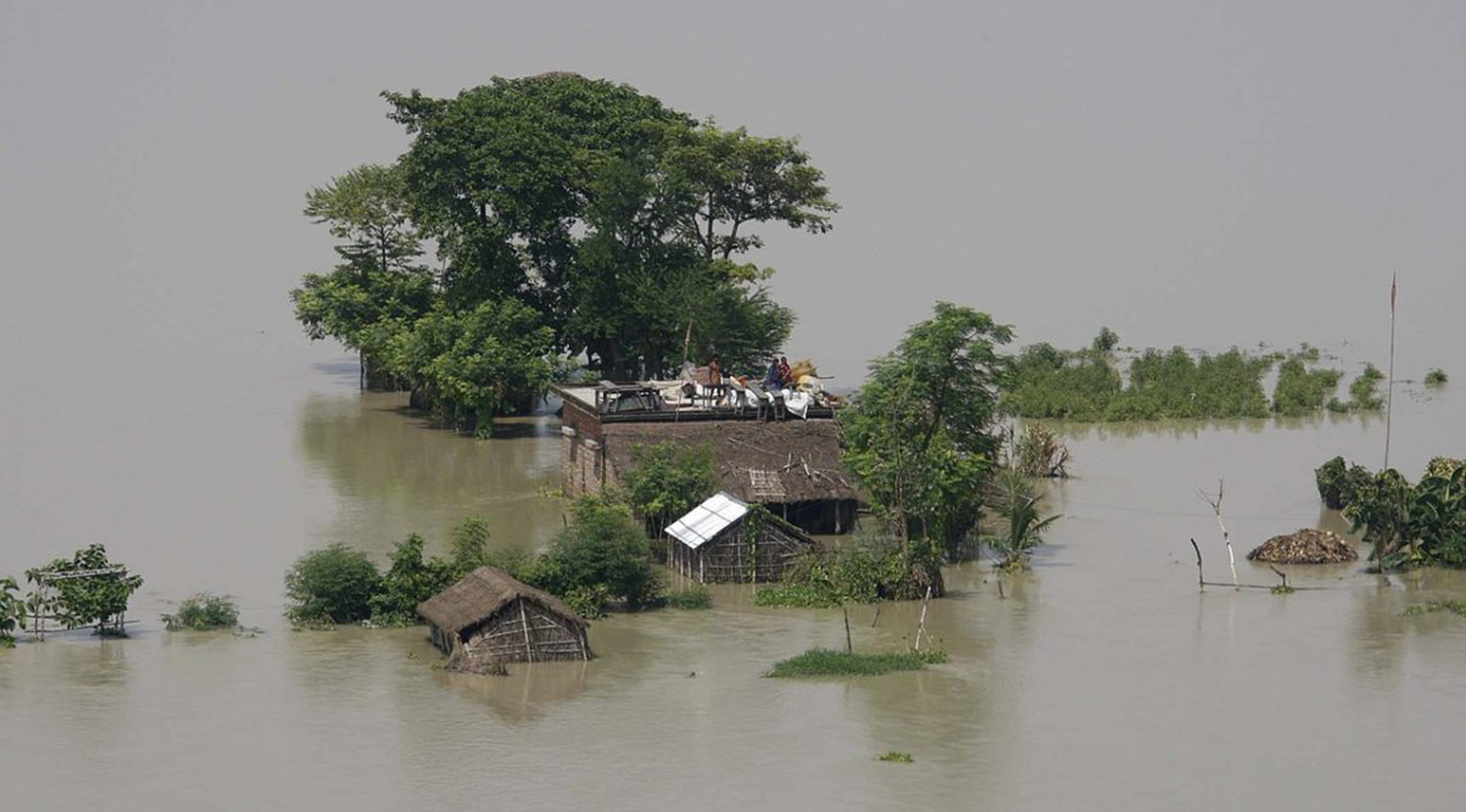
- Floods in India are turning more severe, unpredictable and rather intractable. In 2018 alone, India suffered damages worth over Rs. 950 billion due to floods.
- Number of urban floods is on the rise mainly due to poor drainage and encroachment of old water bodies of cities and towns.
- Despite several agencies involved in flood control, there is a clear lack of coordination among them in the management of floods.
Despite this July being the driest July in the last five years, many parts of India, especially the states of Assam and Bihar, are still reeling under the floods. More than 10 million people are estimated to have been affected and at least 125 people have died due to floods in these two states until the first week of August this year. Besides, hundreds of villages of Uttar Pradesh were inundated, Maharashtra’s capital Mumbai was waterlogged and Kerala has an impending flood.
Flooding is a normal process during monsoon and to some extent, it is needed to carry out some natural processes like bringing alluvial soil to fields, groundwater recharge or replenishment of waterbodies. However, due to erratic weather patterns and an increasing number of intense rainfall events, the floods have become unpredictable and intractable.
In the last few years, the number of incidents and scale of floods has sharply increased and experts believe that effective and structured flood management is urgently required to handle this challenge.
Severe loss due to floods
One of the reasons for the recurring floods in many parts of India is their geographical location. For instance, states like Bihar, Uttar Pradesh, West Bengal, Assam and Bihar are situated in the Terai region, the foothill of Himalayas and hundreds of watercourses originate from these mountains. Besides Ganga, the flood-prone river basins like Kosi, Gandak, Damodar, Brahmaputra and Mahanadi are spread across these states. These rivers have scores of mighty tributaries that bring enormous water in the rainy season causing floods.
According to data presented in the Rajya Sabha, in 2018, India lost 1,808 lives and suffered losses worth an estimated Rs. 957 billion (Rs. 95,736 crores) due to floods across the country. Government data shows that between 1953 and 2011, on an average, floods claimed 1,653 lives every year and caused losses – including the house, public property and crop damage – of Rs. 36.12 billion (Rs. 3,612 crores every year). According to the Assam government, since 1947 more than 125,000 (1.25 lakh) families in the state have lost either their residential land or agricultural land due to floods.
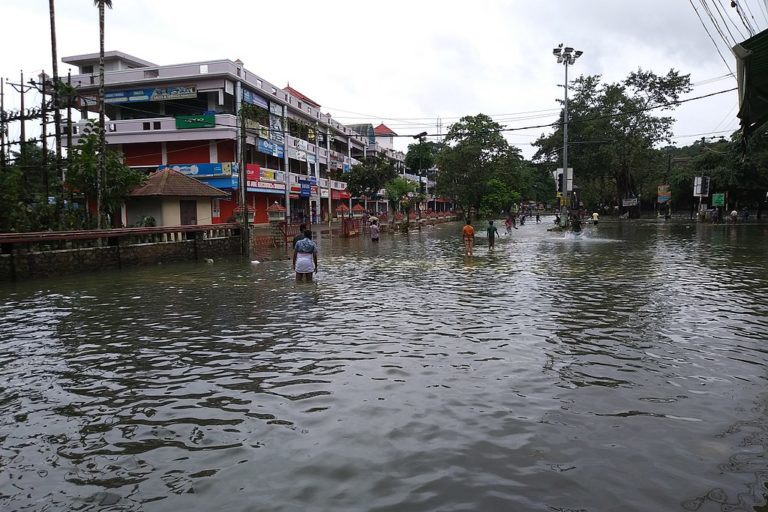
Some of the biggest flood disasters in the last 10 years include Uttarakhand in 2013, Kashmir in 2014, Chennai in 2015, Kerala in 2018 and 2019 and Patna in 2019 besides the recurring floods in northeastern India. According to the Central Water Commission, the expenditure on flood management has risen from Rs. 43.44 billion (Rs. 4,344 crores) in tenth five-year plan (2002-07) to Rs 171.30 billion (Rs 17,130 crores) in 11th five-year plan (2007-12).
Multi-agency role in flood management
In India, a vast federal country with 28 states and eight union territories, the responsibility of flood control and management is scattered across many agencies. The water resources ministries of different states oversee the flood control in consultation with the Central Water Commission (CWC). The main job of CWC is to procure the data of hydrology at the national level – like river discharge measurement and water level in dams etcetera – to alert the states about any imminent or potential flood. Besides, there is a Ganga Flood Control Commission (GFCC), under the Union Jal Shakti Ministry to “deal with flood and its management in Ganga basin states.”
In addition to this, the India Meteorological Department (IMD) provides rainfall or cyclonic event forecast which is used by all the agencies for preparedness to deal with the floods. For the national-level response to disasters, there is National Disaster Management Authority (NDMA) which works under Prime Minister Office (PMO) – and National Institute of Disaster Management (NIDM) – a body under the Union Ministry of Home Affairs (MHA). The job of relief and rescue is carried out by the National Disaster Response Force (NDRF) with state counterparts.
Despite such a plethora of agencies, flood control and management remains a problem in India. Experts believe “streamlining and coordination” among the vast network of agencies is missing.“It is true that various organisations are working at different levels across the country but the problem is in synchronization, collaboration or coordination among these agencies. It is very weak and institutional management is required for effective flood management. We should focus on developing a platform where all the information comes together that can be used effectively and efficiently.” Prasoon Singh, Associate Fellow with Delhi-based The Energy and Resources Institute (TERI) told Mongabay-India.
Changing nature of floods and expanding area
Officially, the total flood-prone area of India is around 40 million hectares which is equivalent to 12 percent of the total area of the country. However, experts note that this figure does not show the actual geographical area vulnerable to floods.
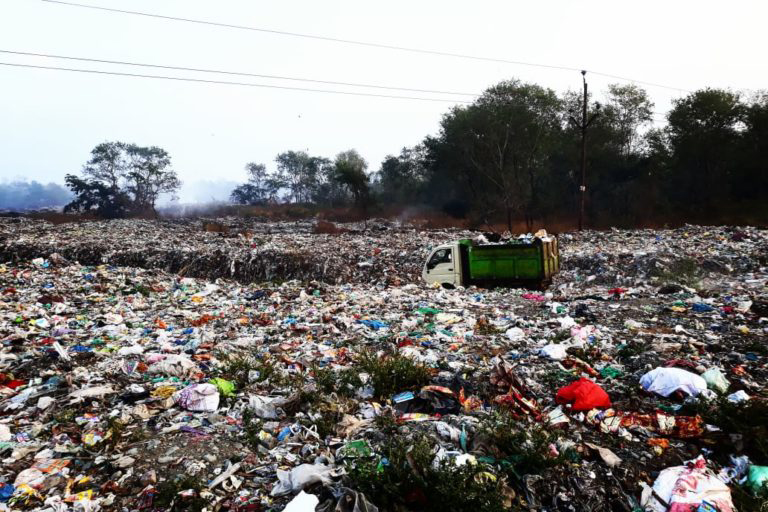
“This figure of the flood-prone area is very old and we have been hearing this figure of 40 to 50 million hectares for at least the last two and a half decades now. Actually, this figure is related to notified riverine flood areas. Now in the last few years, the form and extent of floods have changed a lot and now our towns are also getting inundated. Therefore, we need to map the entire flood-prone area again to get a realistic picture” Anil Gupta, Head of NIDM told Mongabay-India.
Earlier the flood was largely limited to the areas around the basins of rivers like Brahmaputra, Kosi, Gandak, Damodar and Mahanadi. The timing of flood was also limited to rainy seasons and rural populations would deal with the floods in conventional methods. But with the rise of population, new towns and cities rose and old ones expanded. Often this change was poorly executed without any properly thought out master plan. This has resulted in urban flooding events like Mumbai in 2005, Chennai in 2015 and Patna in 2019. Many flood management and weather experts stress the need for identifying the vulnerable “hot-spots” for inundation. They believe mapping of such areas and keeping a meticulous database may provide a micro picture to administrators.
The erection of unnecessary embankments and structures along the banks to “control river flow” has also been questioned by many experts. Rashtriya Barh Aayog (National Flood Commission) set up in the 1970s recommended against such structures unless their “efficacy” is properly assessed.
Dinesh Mishra, a trained engineer and writer who has been monitoring and researching on floods for the past 40 years, stresses the need for proper drainage. He said embankments can only be a temporary solution in some cases.
“In 2007, during the devastating Kosi floods in Bihar, the river had broken the embankments at more than 30 places and at hundreds of places the national highways and state roads were broken. Still, we are erecting the embankments today. This water (of Kosi floods in 2007) had spread all over and remained locked in over in north Bihar for next two and a half months. It means there was no way for the water to get out. The lesson to be learnt is that the embankments are not the solutions and we need proper drainage to deal with floods.” Dinesh Mishra told Mongabay-India.
R.K Jenamani, a senior scientist who is heading the Regional Specialised Meteorological Centre at the IMD agreed with Mishra and said the absence of proper drainage is the key reason behind the urban floods. “We provide early warning for floods but that is just a part of (flood) management. Other things also need to be fixed. You see Mumbai was flooded in 2005 and after 15 years it is still flooding. Why is it flooding even today if people know that the proper drainage system is the only solution? The rain can’t stop. The sea can’t stop,” Jenamani told Mongabay-India.
In the past few decades, the extreme rainfall events have increased causing erratic and heavy rain in short intervals, but factors like poor drainage, excessive cementing of ground, the encroachment of waterbodies – like ponds and lakes- and unplanned garbage disposal have aggravated the situation. Shiraz Wajih, a conservationist, is working on civic issues like strengthening solid waste management and reviving the dying water bodies.
“This entire area of terai at the foothills of Himalaya has been abound in waterbodies. These bodies (rivers, lakes and ponds) provided water holding capacity by storing the water when it rained heavily but in the last few years either these places have been encroached for construction or filled with solid waste and garbage. Therefore, the natural cushion or buffer to accommodate the rainwater have been destroyed in urban areas,” Wajih, told Mongabay-India.
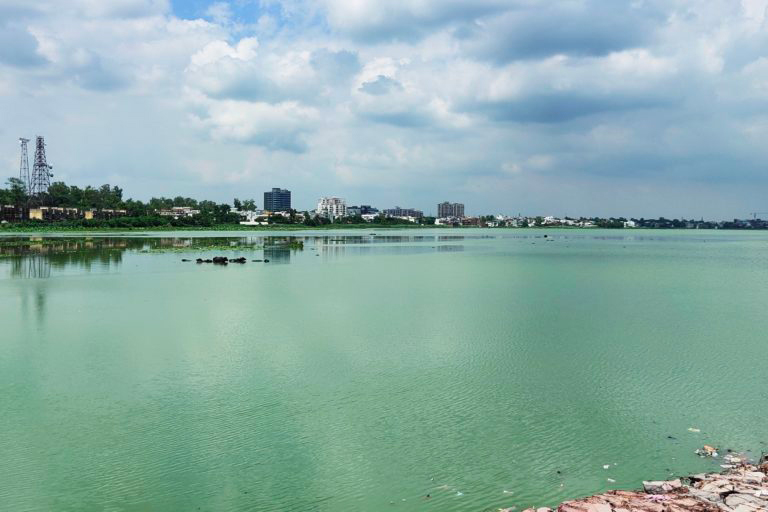
Wajih says once the city of Gorakhpur had more than 100 lakes but today two-third of them are dead today. He shows the conservation effort led by citizens that protected one vast Ramgarh taal of Gorakhpur.
“The conservation of Ramgarh taal was possible with community participation and administration’s help. Protecting such water bodies helps to build cushion and storage capacity to accommodate the floods,” Wajih said.
Land-use policy and capacity building
India’s land policy hasn’t been congenial for efficient flood management either. There have been a number of political, social and economic reasons behind it. A report by the World Meteorological Organisation (WMO) clearly underlined the threat of the weaknesses in any country’s land policy.
“Modern land use gradually encroaching on the natural environment has an impact on all three dimensions of flood risk, namely hazard, vulnerability and exposure,” the WMO report had noted.
Anil Gupta, Head of the NIDM said “land is not a dead entity but it is a living entity like humans and we must give it adequate space to breathe.” The report of WMO highlights the same concern and flags the dangers of a degrading landmass. “Removing vegetation and soil, grading land surface and constructing drainage networks disrupts natural drainage patterns and natural watercourses. By changing pervious natural surfaces to less- or non-pervious artificial surfaces, stormwater runoff rate and total runoff volume increase as a result of declining natural land water storage capacity.”
It clearly shows the importance of the natural defense system of the earth. Last year, a study published in the journal Estuarine, Coastal and Shelf Science analysed how the land-use change impacts flood in coastal areas. One of the findings of the research established the importance of mangroves on the coastal areas prone to flood.
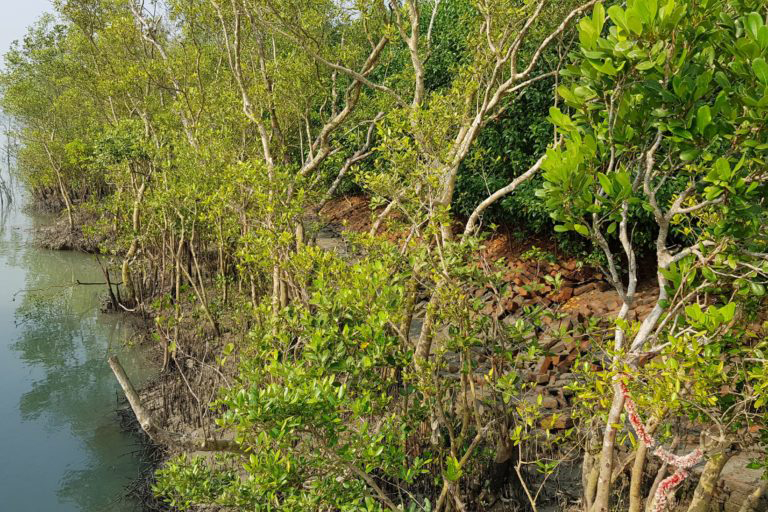
“Mangroves at the seashore work as a protection wall during any coastal flood. Particularly when the flood is caused by a powerful cyclonic storm. Now we know due to global warming effects the cyclones are getting more frequent and intense so mangrove conservation is extremely important and we should protect them from any destruction or degradation,” TERI’s Prasoon Singh, who was one of the co-authors of that research, told Mongabay-India.
Can an early flood warning system solve the issue?
In the last few years, India has focused on building a robust early flood warning system. Chennai suffered major floods in 2015 and, in 2019, it became the first city in India to get an intelligent flood warning system. Similarly, Mumbai got the integrated flood warning system (IFLOWS) in June 2020. These flood warning systems can give area-wise potential flooding details during monsoon. TERI is now launching a similar flood forecasting system for Assam which has been prepared in collaboration with the IMD and the NDMA. According to the IMD, it is now also using rainfall information to calculate the total expected accumulation of water on any river or sub river basins. Getting such information and its sharing with different agencies may help in better flood management as well.
“Such steps are important. This is moving towards building resilience. We should not always think of conquering nature. We should learn to live with nature and the risks associated with it,” Gupta said.
This article first appeared on Mongabay.







